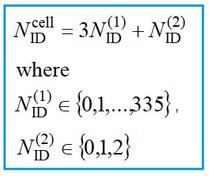LTE vs 5G NR: Physical Layer Timing Differences
Advertisement
This article highlights the differences between LTE and 5G NR physical layer timing units. We’ll explore the formulas used to calculate 5G NR physical layer sampling time, frame duration, and subframe duration.
Introduction
As illustrated in Figure 1, a 5G NR frame has a duration of 10ms. This frame is further divided into 10 subframes, each lasting 1ms.

Figure 1: 5G NR Frame Structure-slot,mini-slot
The number of slots within each subframe is dependent on the subcarrier spacing used. Each slot can accommodate either 14 OFDM symbols (for normal cyclic prefix) or 12 OFDM symbols (for extended cyclic prefix).
The physical layer sampling instant is determined by the number of FFT points and the subcarrier spacing. Let’s delve into these physical layer parameters.
5G NR Physical Layer Sampling Time
The following formula (Formula 1) is used to calculate the 5G NR physical layer time unit (Tc), which is also known as the sampling time in the time domain.

Figure 2: 5G NR Physical layer Sampling time
The formula for calculating Tc is:
Where:
- is the maximum subcarrier spacing.
- is the FFT size.
Example:
- For = 480000 Hz (i.e., 480 KHz subcarrier spacing)
- = 4096 (i.e., FFT size)
- = 0.509 ns
5G NR Frame Duration and Subframe Duration
Formula 2 expresses the 5G NR frame duration and 5G NR subframe duration.

Figure 3: 5G NR Frame duration and Subframe duration
The formulas are as follows:
- Frame duration ():
- Subframe duration ():
Example:
LTE Physical Layer Sampling Time
Using an LTE system bandwidth of 20 MHz with 2048 FFT points and a subcarrier spacing of 15 KHz, the LTE sampling time unit (Ts) is derived as follows, using the previously mentioned Formula 1:
- = 15000 Hz
- = 2048
Relation Between LTE and 5G NR Sampling Times
The relationship (K) between the LTE sampling time and the 5G NR sampling time can be expressed as:
Advertisement
 RF
RF


